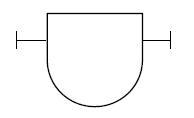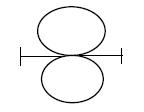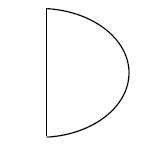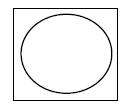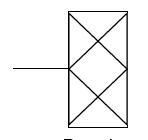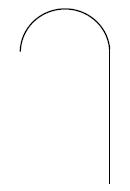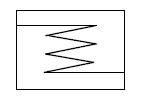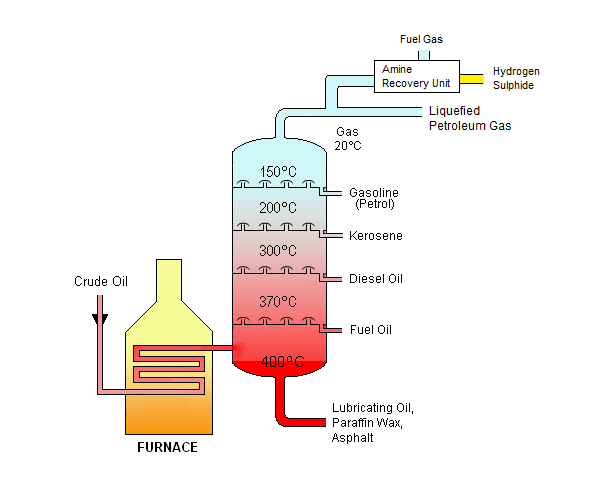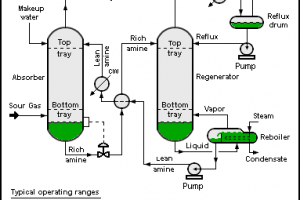Fittings are used to connect sections of pipe or tubing. It is an integral and important part of the process industry. That's why it is very important to know various fittings P&ID symbols to understand the P&ID diagram well.
Commonly used P&ID symbols (Piping and Instrumentation Diagram symbols) for piping fittings are discussed in this post. Note that they may differ slightly from one project to another.
Flange set
Flanges are generally flat, circular pieces of metal or other materials that are used to connect two sections of pipe or other components. A flange set usually includes two matching flanges, each with several bolt holes, which are used to secure the flanges together using bolts and nuts.
Blind Flange
A blind flange is used to seal the end of a pipe or vessel. It does not have a bore or opening in the center. It is typically used in situations where the end of a pipe or vessel needs to be closed off, either temporarily or permanently.
Flow orifice
The flow orifice fitting typically consists of a plate with a small hole or orifice in it. It is used to regulate the flow of fluids through a pipeline by creating a constriction or narrowing in the pipe.
Removable pipe spool
A removable pipe spool fitting is a pre-fabricated section of pipe that is used to connect two pipes or other components in a piping system. It is typically used in situations where the two components being connected are not directly adjacent to one another, or where it is impractical to make a direct connection between them.
Tee type strainer
Strainer can be defined as a pipe fitting through which liquid is passed for purification. This type of fitting is named for its T-shaped design, which includes an inlet and two outlets that are perpendicular to each other. This allows the strainer to be installed in line with the flow of fluid in the system.
Y type strainer
This type of valve has a Y-shaped body with an inlet and outlet on opposite ends.
Basket type strainer
The basket-type strainer has a cylindrical body with a removable strainer basket inside. The basket typically contains a mesh or perforated screen that traps the particles, while allowing the filtered fluid to pass through.
2 basket type strainer
It is similar to a single basket type strainer in function, but it has two separate baskets that work in tandem to provide enhanced filtration.
End plug
An end plug fitting is used to seal the end of a pipe. It is typically used in applications where a section of pipe is not being used or needs to be capped off. The fitting is designed to be inserted into the end of the pipe and secured in place using a variety of methods, such as threading, welding, or gluing.
End cap
This is similar to an end plug fitting, but an end cap fitting typically has a dome-shaped cap that covers the entire end of the pipe, whereas an end plug fitting is designed to fit inside the pipe and only seal off the opening.
Reducer / Expander
Reducers and expanders are types of pipe fittings that are used to connect pipes of different sizes. Reducer is designed to decrease the size of the pipe from a larger diameter to a smaller diameter. Expander is designed to gradually expand the diameter of the pipe to the desired size. This is achieved by using a conical or tapered shape.
Hose connection
This type of fitting is used to connect a hose to a pipe or other device. Hose connection fittings are designed to create a secure, leak-proof connection between a hose and the device it is connected to. This fitting allows the hose to be easily connected and disconnected as needed.
Open spacer
An open spacer fitting is designed to provide the necessary spacing while allowing for some degree of movement or flexibility between the components.
Closed spacer
Unlike an open spacer fitting, a closed spacer fitting is a solid piece. It fills the space between the components, without any gap or space between its two ends.
Open spectacle blind
This fitting is used to temporarily block the flow of fluid. It consists of a metal plate with a hole in the center, which is inserted between two flanges in a pipe. The hole allows for the flow of fluid when the spectacle blind is in the "open" position. And the plate itself provides a barrier to flow when the spectacle blind is in the "closed" position.
Closed spectacle blind
A closed spectacle blind is used to completely block the flow of fluid. It consists of a metal plate with no hole. It is inserted between two flanges in a pipe. The plate provides a complete barrier to the flow of fluid when the spectacle blind is in the "closed" position.
Mixing Tee
Mixing tee fittings are used to mix two or more fluids in a pipe. They typically consist of a T-shaped fitting with one inlet and two outlets. This allows for the flow of two fluids to be combined in a controlled manner.
Sight glass
Sight glass fitting typically consists of a clear or translucent glass or plastic window. This allows for visual observation of the fluid flowing through the system.
Breather
This fitting is used in hydraulic systems to allow for the exchange of air between the inside of a reservoir and the outside environment. It typically consists of a small vent or filter that allows air to flow in and out of the hydraulic system. It also prevents the entry of dirt, dust, and other contaminants.
Gooseneck vent
It is called a gooseneck fitting because its shape resembles the curved neck of a goose. It is used to create a curved section in a pipe or tubing.
Sample cooler
The sample cooler fitting typically consists of a coiled or serpentine tube that is installed in the process stream, along with a heat exchanger or other cooling mechanism that circulates a cooling fluid around the tube. It allows for the collection of a representative sample of fluid from the process stream, which is then cooled down to a safe and manageable temperature for testing or analysis.






